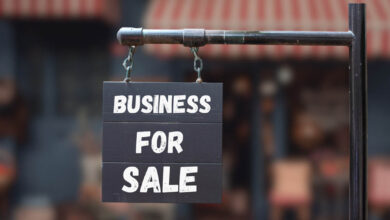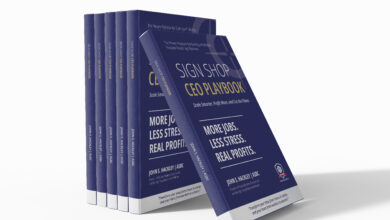Disasters strike when least expected. They can come in many forms. Natural disasters like hurricanes or tornadoes, fires or floods, or even personal tragedies like the death of a business partner.
Regardless of the cause, when disaster strikes, the aftermath can be overwhelming for a small business. For many business owners, it may feel like everything they’ve worked for has been lost.
But it doesn’t have to be the end of the road. While it takes time and effort to rebuild, recovery is possible. Whether you are dealing with the aftermath of a hurricane, a sudden loss, or another type of catastrophe, the steps in this article can help you move from disaster to recovery. These ideas are meant to guide you through the initial shock and get you thinking about the next steps you might want to take.
You don’t have to go through this alone. If you need help creatively brainstorming how to reinvent your business, the book “Moving Past Disaster” can provide further ideas and insight. Use the coupon code HURRICANE to obtain it for free.
Step back & assess the damage
It may sound obvious, but before you can begin a recovery phase, you should evaluate your situation. Whether it is physical damage, loss of inventory or documents, or even emotional tolls, you need a crystal-clear understanding of where you stand.
This step is vital because a knee-jerk reaction may lead to rushed decisions or unforeseen problems. You don’t want to do more harm.
- Survey the damage — Make a list of everything that has been affected. Divide it up into sections if you can for better organization later. This list might include your physical location, equipment, inventory, work in progress, customer relationships, and staff well-being.
- Consult professionals — Reach out to insurance agents, legal advisors, and disaster recovery specialists to gain an accurate perspective on your next steps. Any decisions you make now will have long-lasting effects, so study everything from all angles before proceeding.
Focus on safety & stabilization
After any disaster, the first priority has to be safety. For you, your employees, customers, and your business. Stabilization can involve both physical and emotional safety.
- Secure the premises — If the building is damaged, make sure it is safe to enter. Be careful of water damage, electrical issues, or other problems that may not be obvious. Depending on the level of damage, you should involve professionals to assess structural integrity or to help remove hazardous materials.
- Employee well-being — Take care of your employees. They are going through the same aftermath you are and may have challenges with their homes or families. Extend some grace and allow them to work problems out, too. You want to ensure they are physically and emotionally OK.
- Establish a temporary workspace — If your physical location is compromised, find a safe space to use as an office. A great thing about this industry is that we come together in times of crisis. Reach out to industry friends and see if they can handle some work orders for you while you get back on your feet.
Review your financial situation
One of the harshest realities after a disaster is how it affects your finances. Many businesses will experience a significant drop in revenue while dealing with the recovery. As soon as you can start digging in, revisit your financials to clarify your current situation.
- Cash flow — How much liquid capital do you have? What immediate expenses is your business facing? Get clarity on your short-term cash flow situation immediately to help you make better decisions for prioritizing recovery steps.
- Lenders & creditors — Contact your lenders and creditors immediately. Many companies offer special disaster recovery options, including deferred payments and restructuring plans. Discover what is available and use these helpful programs to ease your recovery plans.
- Government assistance — If the disaster qualifies, you can obtain financial help and assistance from many different agencies. Do not believe social media memes. There is help available for you. Here is a partial list:
Connect with customers
Your customers may need to be informed of the extent of the damage to your business. Communicating with them is crucial, but helping them during this time of need is also important. Reaching out helps maintain your relationships but also helps manage expectations during the crisis. Here are some ideas:
- Online updates — Update your website and social media channels to inform your customers about what happened. Keep them informed on your operations, plans for recovery, and how you can help them. Transparency builds trust.
- Prioritize — If you have clients who represent a large chunk of your business, reach out to them personally. Discover how to help them now and update them on your recovery efforts. Communication pushes things forward.
File an effective insurance claim
Filing an insurance claim may be one of the biggest hurdles to overcome after a disaster. It is critical for your financial recovery. A well-documented and strategically managed claim can significantly affect your compensation package.
- Document everything — As soon as it is safe, take photos and videos of all the damage. Be sure to include the state of your business before any cleanup or repair efforts begin.
- Keep good records — Save all receipts, even the small ones. Keep them safe. These records will help you justify any claims later.
- Follow up consistently — Stay in contact with your insurance provider. They will probably have their hands full. Ask for updates and clarify payout timelines. Persistence is key when dealing with claims adjusters and insurance companies.
Connect with employees
As you know, your employees are the backbone of your business. Their well-being is as important as your bottom line. Ensuring their support during the difficult recovery process will help you retain valuable team members and maintain morale. Sooner or later, everyone wants to come back to work.
- Information — Your crew wants and needs to be informed about the recovery process and how it affects their jobs. Be candid and truthful. Transparency helps reduce anxiety and uncertainty.
- Offer flexible work options — Some employees could work remotely or have flexible schedules depending on the situation. By accommodating your team during the crisis, you acknowledge their well-being and safety.
- Provide support — As the business owner and leader, people will naturally look to you for guidance. Obtain information for your area for counseling services, mental health assistance, and other support services they could use. They may not know where to turn, so they will feel valued and cared for when you help them navigate that uncertainty.
Your network
Recovering from disaster isn’t something you have to do alone. Don’t feel awkward reaching out to your professional network for help. This includes your vendors, customers, industry colleagues, and even competitors. Communities come together during times of crisis, and people are willing to help in ways you may not expect. Just ask.
- What do you need? Reach out for assistance. This could mean asking suppliers for extended payment terms, asking peers to run jobs for you, or help in some other way. Nobody knows until you say something.
- Join recovery groups — It is not unusual for local chambers of commerce or industry groups to form disaster recovery teams to help businesses in need. Our industry saw this firsthand with the “Here for Good” movement after COVID-19. Connecting with others could help with financial, logistical, or emotional support with others going through similar challenges.
Develop a recovery plan
To help make this recovery process more manageable, below are some elements you can use to take action immediately. Use these ideas as a simple checklist for your current situation and start moving past disaster.

Next steps
My book “Moving Past Disaster” is available to you for free. Just use the QR code to download with the coupon code HURRICANE.
This book uses tried-and-true creative mental models to unlock new directions for your business. “Moving Past Disaster” has tips, checklists, exercises, examples, and many creative thought-planning ideas to provoke you into action and guide you to a new, successful future. The workbook pages will help you organize your thoughts, delegate tasks, and consider a new perspective. When you are finished reading the book and completing the exercises as outlined, you will be able to:
- Snapshot your current problems.
- Develop new ideas.
- Create a new business plan.
- Deploy a two-year action plan.
If you find yourself in a confusing, frustrating, and emotionally fraught situation due to the recent weather-related events, understand that these events end. You can recover and build something even better.
It is time to get working on shaping that new future. Let “Moving Past Disaster” guide you through the process of developing new ideas you can use for this journey.




